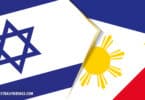The Philippines is a country rich with cultural heritage and a diverse population that traces its roots to various groups of early settlers. Among the most significant of these early inhabitants were the Austronesians and the Negritos, two groups whose legacies have left a lasting imprint on Filipino ancestry. Understanding the histories and contributions of these groups is key to exploring your Filipino genealogy.
The Austronesians: Pioneers of the Archipelago
Around two to three thousand years ago, the Austronesians began arriving in the Philippines. These seafaring people were skilled navigators, spreading across the islands and bringing with them innovations in agriculture, boat-building, and pottery. They established communities across the archipelago, laying the foundation for what would become the diverse cultures of the Philippines.
The Austronesians didn’t just leave a physical imprint on the land; they also influenced the linguistic landscape. Today, many of the languages spoken in the Philippines, such as Tagalog, Cebuano, and Ilocano, can trace their roots back to the Austronesian language family. This linguistic connection can provide valuable clues for genealogists tracing their family’s heritage in the region.
Tracing Austronesian Ancestry:
If you’re looking to trace your roots back to the Austronesians, start by exploring your family’s region’s linguistic and cultural history. While ancient written records might be scarce, cultural practices and oral traditions can offer insight into your ancestry. Local histories, folklore, and even regional festivals might carry echoes of Austronesian heritage, providing a rich context for your genealogical research.
The Negritos: The First Settlers of the Islands
Long before the Austronesians arrived, the Negritos had already established themselves as the earliest known settlers of the Philippines. These small-statured, dark-skinned people are believed to have migrated to the Philippines from nearby Southeast Asian regions, bringing unique traditions and a deep connection to the land.
The Negritos played a crucial role in shaping the cultural landscape of the Philippines. Though their numbers have dwindled over time due to various migrations and intermarriages, their legacy persists in the traditions and stories passed down through generations.
Tracing Negrito Ancestry:
Researching Negrito ancestry can be challenging due to the lack of extensive written records, but oral histories and local traditions can provide valuable insights. Connecting with indigenous groups and studying the anthropological research on the Negritos can also offer pathways to discovering this part of your heritage.
For those looking to delve deeper, genetic testing has become an increasingly useful tool in tracing Negrito ancestry, providing scientific evidence that can complement traditional genealogical research.
The Fusion of Cultures: Austronesian and Negrito Interactions
As the Austronesians settled across the islands, they encountered the Negritos, leading to a blending of cultures that shaped the early Filipino identity. This interaction wasn’t just about coexistence but about exchanging knowledge, traditions, and ways of life. The result was a unique and rich culture that is still evident in many aspects of Filipino life today.
From the arts and crafts to the agricultural practices and even religious beliefs, the influence of both Austronesian and Negrito cultures can be seen throughout the country. Understanding this cultural fusion is essential for anyone tracing their Filipino roots, as it provides a deeper context for the diverse heritage many Filipinos share.
Researching the Blending of Cultures:
To explore this cultural fusion, start by examining the regional histories where your family is from. Local customs, dialects, and even culinary traditions might hold traces of this blend of Austronesian and Negrito influences. Pay attention to your family’s folklore and traditional practices, which can be powerful indicators of your ancestral roots.
Additionally, consider connecting with local historians or cultural organizations that focus on preserving the heritage of these early settlers. They may offer resources or insights that can help you trace the blending of these cultures in your own family history.
Challenges in Tracing Early Filipino Ancestry
Tracing early Filipino ancestry can be complex, particularly given the lack of extensive records from these periods. The Austronesians and Negritos left behind more than just genetic markers; they left behind cultural legacies that are woven into the fabric of Filipino society. However, distinguishing these influences from those of later settlers and colonizers can be challenging.
Overcoming the Challenges:
To tackle these challenges, using a combination of methods in your genealogical research is essential. Oral histories, local customs, and modern genetic testing can all help uncover your early Filipino ancestry. Consider reaching out to communities preserving indigenous practices, as they may be key to unlocking this part of your family history.
Another valuable approach is to engage with academic research on the Austronesians and Negritos. Anthropology, linguistics, and history studies can provide context and evidence that supports your genealogical findings, giving you a more comprehensive understanding of your roots.
The early settlers of the Philippines, particularly the Austronesians and Negritos, laid the groundwork for the rich cultural heritage that Filipinos enjoy today. Tracing your ancestry back to these groups offers a connection to your family’s past and a deeper understanding of the diverse influences that have shaped the Philippines.
Whether you’re uncovering the Austronesian roots of your family’s language or exploring the Negrito traditions passed down through generations, each discovery is a step toward embracing the full richness of your Filipino heritage. By blending traditional genealogical research with modern tools and local histories, you can piece together a story that honors the early settlers and celebrates the unique cultural mosaic of the Philippines.
Read More:
“The Austronesians: Historical and Comparative Perspectives”
This book comprehensively examines Austronesian-speaking peoples’ origins, migrations, and cultural developments, including their influence in the Philippines.
“Philippine Prehistory: An Anthropological Overview of the Beginnings of Filipino Society and Culture” by F. Landa Jocano
A key resource that explores the early history of the Philippines, including the roles of the Negritos and Austronesians.
“Negritos Of Zambales” by William Allan Reed
This older text provides an in-depth ethnographic study of the Negrito groups in the Philippines, focusing on their language, culture, and history.






